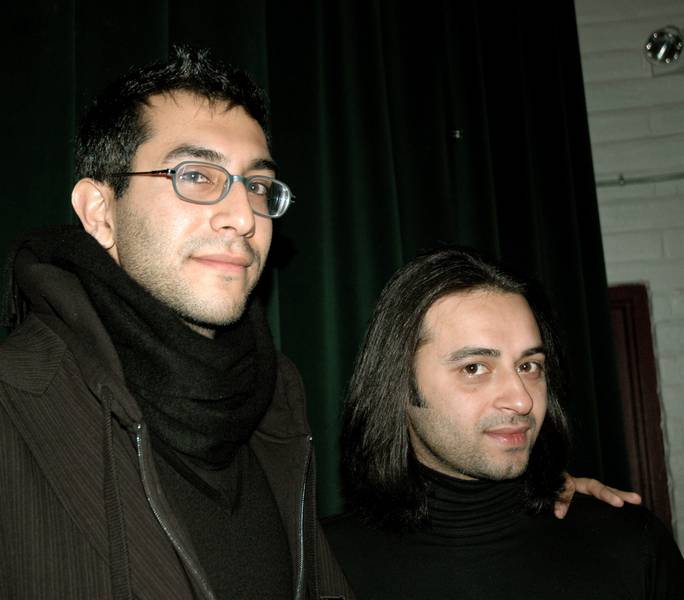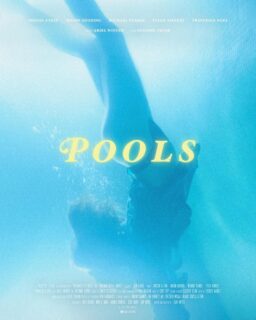PARK CITY, Utah – On the last day of Sundance 2006, I went to see one final film, named “Man Push Cart.” It was playing at 8:30 a.m. in the Prospector Square Theater, which is a large room filled with fairly comfortable folding chairs. The movie tells the story of a young man who was once a rock star in his native Pakistan, but now operates a stainless steel push cart on the streets of Manhattan, vending coffee, tea, muffins and bagels (“You want cream cheese?”).
The room was filled. In front of me were a woman from Ogden and her brother from Philadelphia. They said they attend Sundance to see films that are really about something. After “Man Push Cart” was over, they said they loved it. So did I. But I loved it not only for itself, but because of the conditions of its making.
At the end of 10 days and hundred of films and hype about movie stars and swag bags and midnight parties, this is what Sundance is really about: This man pushing this cart.
The movie was written and directed by Ramin Bahrani, an American born in Iran. It stars Ahmad Razvi, an American born in Pakistan. It was shot in less than three weeks, on a small budget, with Bahrani grabbing a lot of his shots by filming from across the street.
There’s a scene where the hero, also named Ahmad, offers to sell some bootleg videos to a couple of guys loading merchandise. He says they’re $8 each, two for $15. “I can get them for four bucks in Brooklyn,” says one of the guys. This guy did not know he was in a film; Bahrani got him to sign a release so he could keep the scene. As for (the real) Ahmad, when he was not acting he was working on locations and continuity. Everybody on the film worked on everything.
Ahmad is a sad man whose wife has died and whose in-laws will not let him see his son. His career as a singing star is long forgotten. He gets up at three every morning, stocks his cart, and pulls it through the streets. He makes friends with a Spanish woman who is filling in for a relative at a nearby magazine stand. She likes him. But can he see a future for himself?
Bahrani said one of the inspirations for his film was The Myth of Sisyphus, by Albert Camus. That’s the story of a man who spends his life rolling a heavy rock up a hill, only to see it roll back down again. The life of Ahmad resembles the plight of Sisyphus. At the end of the film, we see him helping a friend pull a cart through the streets. “Two Men Push Cart,” I guess. Is this progress? Is it reason for hope?
It’s almost impossible to convey the particular tone and effect of “Man Push Cart.” It is an experience, not a synopsis. My purpose is to show that with very little money but a lot of effort, a director can push a movie all the way uphill to Sundance. This man may have been born in Iran and his star may be from Pakistan, but they are Americans, their film is mostly in English, it is entered in the American “Spectrum” section, and people from Ogden and Philadelphia come to see it because they hunger for such films. The whole experience contains the Sundance idea: Anyone can make a movie, and if it is good enough Sundance can help it find an audience.
“Man Push Cart” didn’t win any prizes later that night, at the award ceremony. But the winning films were also uphill battles. “Quinceanera,” the winner as best dramatic film, takes us into the life of a 15-year-old Latina in Los Angeles, who faces a crisis and finds hope from her elderly great-uncle and her gay cousin. The film was made by a Brit named Wash Westmoreland and a New Yorker named Richard Glazer, “and we are both gay,” Westmoreland said, perhaps to underline how their film enters lives completely unlike their own, and view them with empathy.
I wish “Man Push Cart” could be seen by the Minute Men, self-anointed patriots shown in the Sundance documentary “Crossing Arizona,” who man the Mexican border with night-vision binoculars and hope to repel illegal immigrants without whom Arizona’s agricultural economy would collapse. I wonder if the Minute Men see themselves as the children of immigrants. Can they see Ahmad as an American?
The best Sundance documentary this year was “God Grew Tired of Us,” by Christopher Quinn, who told the stories of some 27,000 starving Sudanese boys who trekked through a desert to survive, while the world ignored them. When the screening was over, a member of the audience wrote a check for $25,000 for Sudanese relief.
Certainly Quinn did not go to the Sudan hoping for fame or fortune; he saw a story that he felt he had to tell.
Julia Kwan felt the same way. She is a young woman from Vancouver who made “Eve & the Fire Horse,” about two young Chinese- Canadian sisters who take religion very seriously. They ask questions a theologian would find tricky, like, “When the Egyptians were drowned in the Red Sea, why did God drown their horses, too?” One sister becomes a Catholic, the other a Buddhist. Their stories are based on Kwan’s childhood memories. Her film won a special jury prize in the world cinema section. Although it is visually beautiful and moves with poetic grace, it was as hard to make as the others. It must have looked impossible at one point.
Most of the movies that open every week are calculated financial investments made by people who expect to see a profit. Many of the smaller Sundance films are made by people who never expect to be able to pay them off. They make them because they are filled with a vision or a message, and want to share their experience. To see them is to participate in their lives. It is hard for a man to push a cart. It is easier when there are two men. Maybe Sundance is like the other guy, helping to push the cart.












